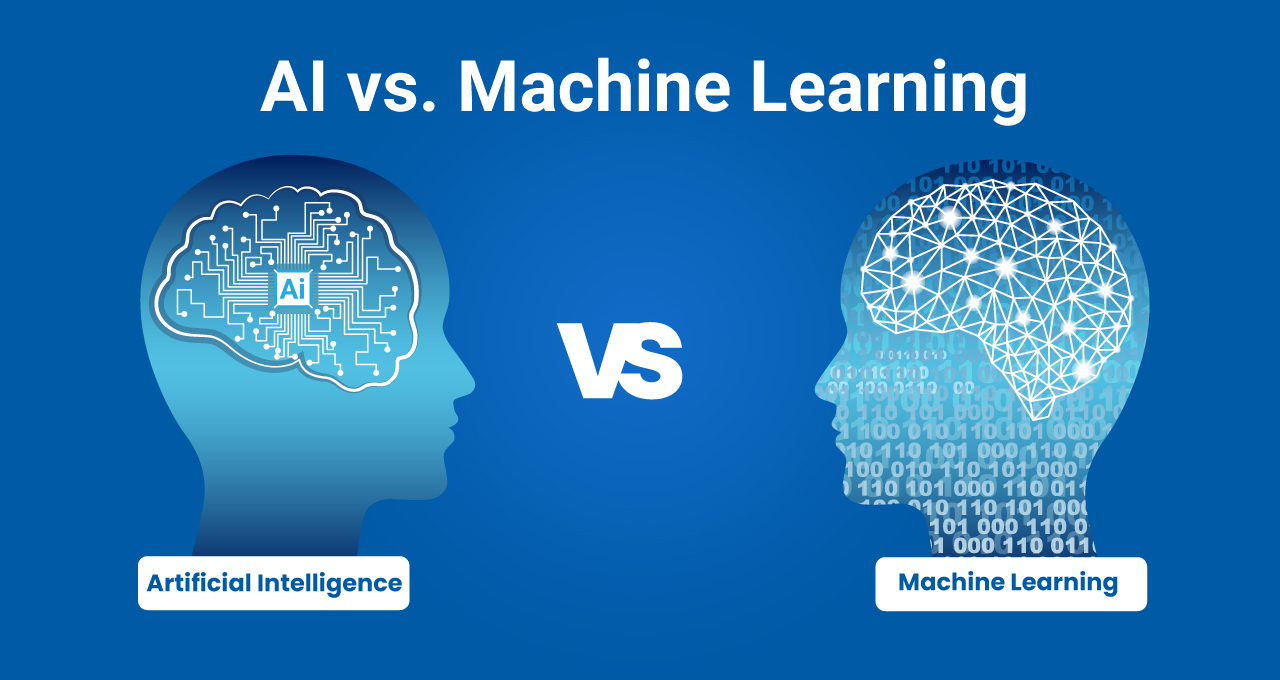
Artificial Intelligence (AI) and Machine Learning (ML) are two related fields within the broader field of computer science. AI is a term used to refer to the ability of machines to perform tasks that require human intelligence, such as learning, writing, and problem-solving. ML is a subset of AI that focuses on the development of algorithms that can learn from data without programming.
What is Artificial Intelligence (AI)?
Artificial Intelligence refers to the development of computer systems that can perform tasks that typically require human intelligence. These tasks include learning, reasoning, problem-solving, perception, language writing, and decision-making. AI systems aim to simulate human intelligence by analyzing data, recognizing patterns, and making predictions based on that analysis.
What is Machine Learning (ML)?
Machine Learning is a subset of AI that focuses on the development of algorithms and models that enable computers to learn and improve from experience without being explicitly programmed. Instead of following a set of predefined rules, machine learning algorithms learn patterns and relationships from data through iterative processes. The algorithms used in ML can learn from examples, adapt to new data, make predictions, and take actions based on what they have learned. It is the data that trains algorithms to learn and perform tasks.
Machine Learning algorithms can be broadly categorized into supervised learning, unsupervised learning, and reinforcement learning:
- Supervised Learning: In supervised learning, the algorithm is trained on labeled data, where the input data is accompanied by the predicted output. The algorithm learns to map the input to the output by generalizing from the labeled examples. With supervised learning, the machines can make predictions on new, and unseen data.
- Unsupervised Learning: Unsupervised learning involves training the algorithm on unlabeled data. The algorithm explores the data to discover patterns, relationships, or structures without prior knowledge of the expected output. Common tasks in unsupervised learning include clustering, dimensionality reduction, and anomaly detection.
- Reinforcement Learning: Reinforcement learning involves training an algorithm to interact with an environment and learn by receiving feedback in the form of rewards or penalties. The algorithm learns through trial and error, adjusting its actions based on the received feedback, with the goal of maximizing cumulative rewards.
Machine Learning techniques and algorithms are widely used in various sectors including image and speech recognition, natural language processing, recommendation systems, autonomous vehicles, healthcare, finance, and many other industries. These techniques have the ability to process large amounts of data, recognize complex patterns, and make accurate predictions, contributing to advancements in technology and automation.
What are the examples of AI and ML being used today?
AI and ML have many applications across multiple industries. The following are a few that made the most impact on our lives in recent years.
1. AI Chatbots
The newly introduced ChatGPT and Google Bard are good examples of AI, and underlying ML to answer user queries.
2. Virtual Personal Assistants
Amazon's Alexa, Apple's Siri, Google Assistant, and Microsoft's Cortana are good examples of AI-powered virtual assistants that use natural language processing and machine learning algorithms to answer user queries.
3. Self Driving Cars
AI helps self-driving cars by using sensors like cameras, lidar, and radar to understand the surrounding environment. The AI algorithms process the sensor data to detect objects such as cars, pedestrians, and traffic signs. Based on this information, the AI system makes decisions on how to drive, like when to accelerate, brake, or change lanes. It also plans the driving route considering factors like the destination and current traffic conditions. AI allows self-driving cars to adapt to changing situations on the road and continuously learn from their experiences to improve their driving capabilities.
4. Fraud Detection
Banks and credit card companies employ ML techniques to analyze data and identify patterns & anomalies that indicate potential fraudulent activity. The process starts with collecting transaction data and user profiles, and then the machine learning model is trained using this data to recognize patterns associated with fraud and normal transactions. When a new transaction occurs, the model compares the transaction with the learned patterns and flags any deviations as potential fraud. A risk score is assigned to each transaction based on the detected anomalies. High-risk transactions are flagged for further investigation, while low-risk transactions may be configured to proceed. The model continuously learns and improves the patterns over time, adapting to new fraud patterns and detecting frauds accurately without false positives.
5. Other Applications
There are so many different applications where AI and ML can be employed to help various sectors and industries. Medical diagnosis, Spam filters, Image and Speech recognition, and Language processing are a few examples of AI and ML.
Conclusion
AI and ML technologies have revolutionized many aspects of our lives. They have created groundbreaking applications in healthcare, finance, transportation, entertainment, and many other industries. AI enables machines to simulate human intelligence, while ML algorithms enable computers to learn from data and improve their performance without explicit programming.
AI and ML made significant advancements in virtual personal assistants, image recognition, recommendation systems, fraud detection, autonomous vehicles, and many more. They continue to evolve, with ongoing research and development pushing the boundaries of their capacity. While there are challenges and ethical considerations to address, the potential for AI and ML to drive innovation, enhance decision-making, and solve complex problems is immense.
Share this post
Leave a comment
All comments are moderated. Spammy and bot submitted comments are deleted. Please submit the comments that are helpful to others, and we'll approve your comments. A comment that includes outbound link will only be approved if the content is relevant to the topic, and has some value to our readers.




Comments (0)
No comment